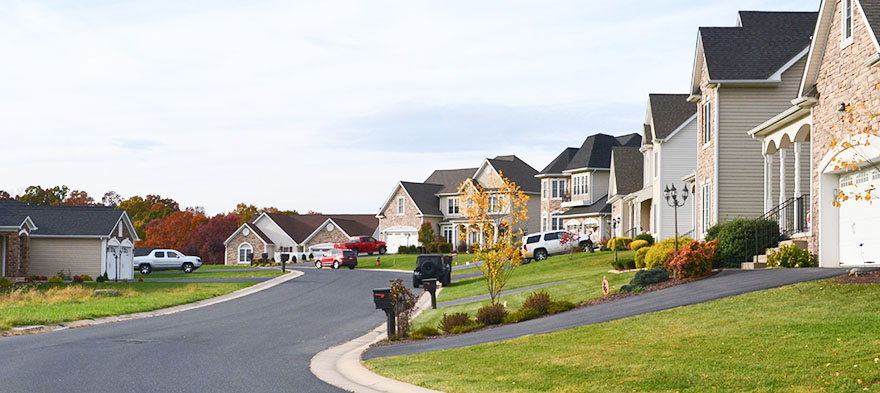
Mar 17, 2017 12:00:00 AM
The number of people living in poverty in the suburbs also exceeds that in urban areas. In testimony earlier this month before a House of Representatives Ways and Means subcommittee, Elizabeth Kneebone, the co-author of Confronting Suburban Poverty in America, offered a stark look at the figures: In 2015, for the first time on record, suburbs surpassed cities in the number of residents living in poverty—16 million in the suburbs, outpacing cities by more than 3 million people. For youth and families, economic hardship and a lack of English proficiency can make navigating the school bureaucracy especially daunting, hindering parent engagement and students’ education.Yes, poverty is more concentrated in urban systems, and the disinvestment in big city schools is more pervasive and entrenched. But one big advantage urban schools have over suburban ones is they know how to deal. They hire teachers who come in, eyes wide open. They probably have some training in cultural competence, alternative discipline, second languages and classroom management strategies. They know how to do more with less. They are resourceful when it comes to tapping philanthropic partnerships. But the learning curve has proven especially steep in some suburban schools, because many teachers land in these school districts with the mindset that they’ve “paid their dues” and “done a tour of duty” in a tough urban school and now they are heading to easy street because the salaries are higher and they figure the challenging families will be the overzealous helicopter parents who micromanage every academic decision. And those helicopter parents aren’t making the shift to a new reality either. Some parents continue to hoard the best opportunities for their children, demanding homogenous class groupings and access to “gifted programs” so their children don’t have to be touched by children with higher academic demands and more complicated families. Here’s the other part of the problem: The suburbs don’t have broad access to the kind of wraparound programs and philanthropic support that fill in all those gaps that schools can’t fill.
Suburban districts nationally are struggling to adjust to the new realities in schools. A recent report from the Center on Reinventing Public Education (CRPE), “ Suburban Schools: The Unrecognized Frontier in Public Education,” concludes that large numbers of English-language learners, student refugees, and students whose families struggle with poverty require suburban school districts to adapt and shift resources. 'Suburbs essentially need to...become more nimble and responsive in the face of the new lives that are living there,' said Jordan Posamentier, the report’s co-author and the deputy policy director at CRPE, an education research group affiliated with the University of Washington. 'The educational infrastructure in suburbs is playing catch-up in a lot of parts of the country.'Good intentions are not enough to fix this. Suburban schools need to hire to this burgeoning need and they need to re-train for a new reality. National foundations need to re-imagine what high-need school districts look like. Nostalgia for the white picket fences isn’t cutting it anymore.
Tracy Dell’Angela is a writer, education nonprofit executive director and a mom passionate about education improvements. Previously, Tracy was Director of Outreach and Communications for the Institute of Education Sciences (IES) at the U.S. Department of Education in Washington, D.C. She came to IES from the University of Chicago Consortium on Chicago School Research, which produces research that drives improvement in Chicago and nationwide. She also served as Senior Project Director for 100Kin10 at the University of Chicago and was Director of Program Investments and Partnerships for the Chicago Public Education Fund. Tracy spent most of her career as an award-winning newspaper journalist, including 12 years at the Chicago Tribune as an education reporter covering national policy and the Chicago Public Schools. A Californian by birth but a Chicagoan in spirit, Tracy attended University of Chicago as a master's student in social sciences and earned a B.A. in journalism and political science from San Diego State University.
The story you tell yourself about your own math ability tends to become true. This isn’t some Oprah aphorism about attracting what you want from the universe. Well, I guess it kind of is, but...
If you have a child with disabilities, you’re not alone: According to the latest data, over 7 million American schoolchildren — 14% of all students ages 3-21 — are classified as eligible for special...
The fight for educational equity has never been just about schools. The real North Star for this work is providing opportunities for each child to thrive into adulthood. This means that our advocacy...
Your donations support the voices who challenge decision makers to provide the learning opportunities all children need to thrive.
Ed Post is the flagship website platform of brightbeam, a 501(c3) network of education activists and influencers demanding a better education and a brighter future for every child.
© 2020–2024 brightbeam. All rights reserved.
Leave a Comment